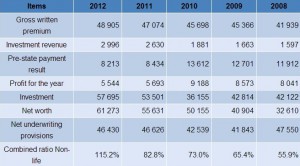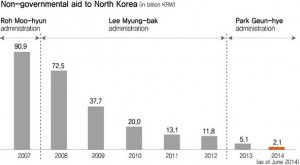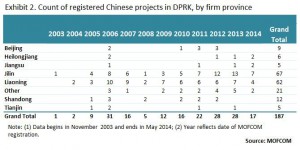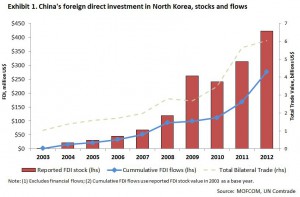Institute for Far Eastern Studies (IFES)
2014-6-18
With the international sanctions against the DPRK and the country’s continual isolation, North Korean authorities are stressing the need to mobilize the “cash in the closet” being kept by more and more North Korean people and institutions.
According to an article published in the Kim Il Sung University Gazette (Vol. 1, 2014, January 20), “The Basic Direction of Financial Management and Measures to Resolve Funding Problems Based on Kimilsung-Kimjongilism,” one solution to finance the enormous defense and economic construction costs is to “mobilize idle funds.”
The article states the following: “Some of the funds that are being circulated in the market have strayed away from the normal production process and distribution passage and remain harbored in the hands of organizations, enterprises, and people. . . . Mobilization of idle funds shall meet the funding needs of the state and serve as a source of supplementary income to increase state revenue.”
The article adds that “The state should secure idle funds of institutions and enterprises through banks and mobilize idle cash kept by the people through savings and insurance,” and furthermore states that “Banks should concentrate to have control over idle funds.”
According to the article, “Dependence on foreign aid to resolve funding problems will lead to continuous financial subjugation.” Mobilization of idle funds is seen as a necessary policy to realize the national goal of “autonomous economy,” which takes precedence over attracting foreign investment.
Since the early 2000s, North Korea has emphasized the need to mobilize institutions’ and persons’ idle funds. But the North Korean people remain reluctant to save money in banks for the fear of revealing their income to authorities and anxiety over the possibility of losing their savings.
The recent increase in North Korean academia’s emphasis on the “fiscal expansion through the mobilization of idle funds” began from late last year, but it also appears to serve the purpose of attracting capital to fund economic development zone projects, which is currently suffering from fund shortages.
North Korea continues to seek opportunities to expand trade and exchanges with Russia and China but is also turning an eye toward the domestic market to fully maximize its objective of fiscal expansion.
In addition, the issue of introducing commercial banks (as a means to effectively mobilize idle funds of the private sector) is being raised again — a policy that remained inactive for a decade due to insignificant results.
North Korea instituted the Commercial Banking Act in 2006, but the actual operation of the bank has yet to be confirmed.





